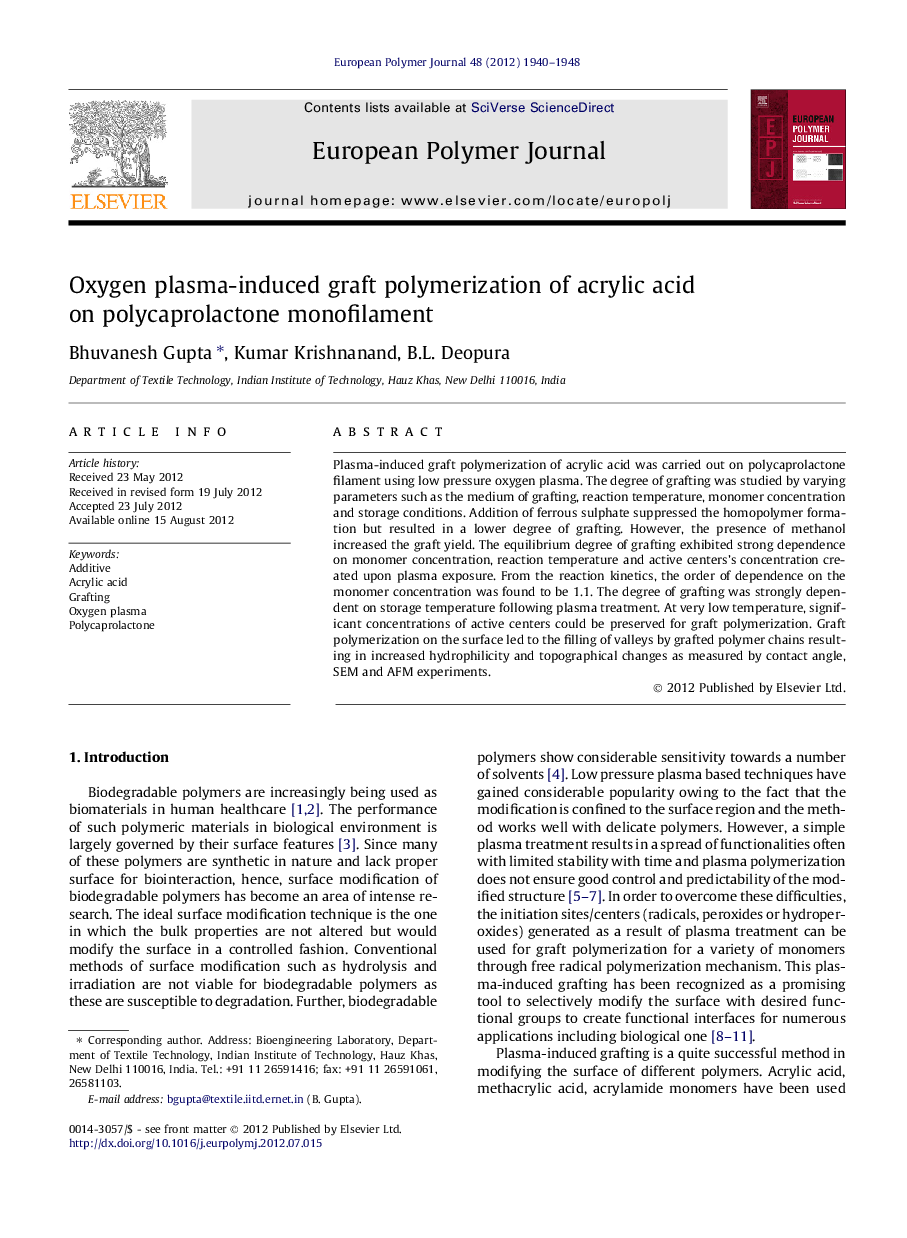| Article ID | Journal | Published Year | Pages | File Type |
|---|---|---|---|---|
| 1400472 | European Polymer Journal | 2012 | 9 Pages |
Plasma-induced graft polymerization of acrylic acid was carried out on polycaprolactone filament using low pressure oxygen plasma. The degree of grafting was studied by varying parameters such as the medium of grafting, reaction temperature, monomer concentration and storage conditions. Addition of ferrous sulphate suppressed the homopolymer formation but resulted in a lower degree of grafting. However, the presence of methanol increased the graft yield. The equilibrium degree of grafting exhibited strong dependence on monomer concentration, reaction temperature and active centers’s concentration created upon plasma exposure. From the reaction kinetics, the order of dependence on the monomer concentration was found to be 1.1. The degree of grafting was strongly dependent on storage temperature following plasma treatment. At very low temperature, significant concentrations of active centers could be preserved for graft polymerization. Graft polymerization on the surface led to the filling of valleys by grafted polymer chains resulting in increased hydrophilicity and topographical changes as measured by contact angle, SEM and AFM experiments.
Graphical abstractGraft polymerization of acrylic acid on the oxygen plasma treated surface of polycaprolactone filament leads to the filling of valleys by the grafted chains resulting in smoothening of the surface topography.Figure optionsDownload full-size imageDownload as PowerPoint slideHighlights► Plasma-induced graft polymerization of acrylic acid was carried out on polycaprolactone filament. ► Influence of various parameters on the degree of grafting was studied. ► Strong dependence on reaction temperature and concentration of additives, monomer and active centers was found. ► Graft polymerization led to smoothening of the surface morphology and topography.
